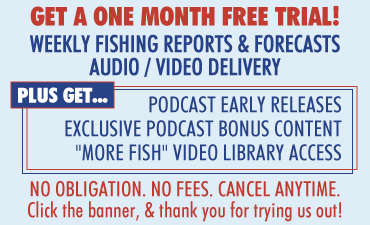Releases – September 28, 2017
New oyster harvest regulations going into effect this year lower the daily commercial trip limit for Shellfish License holders.
Harvest of oysters by hand methods from public water bottom will open at sunrise Oct. 15. Those who hold appropriate commercial fishing licenses may harvest oysters between sunrise and sunset, Monday through Friday each week.
For those fishing under a commercial Shellfish License, the harvest limit will be reduced to two bushels per person, with a maximum of four bushels per vessel. The daily hand harvest limits for Standard Commercial Fishing License holders will remain unchanged, unless they are part of a combined commercial operation with the Shellfish License holder.
If a Shellfish License holder is part of a combined commercial operation with a Standard Commercial Fishing License holder, the combined fishing operation will be limited to seven bushels per day.
The Marine Fisheries Commission adopted the changes in February as part of Amendment 4 to the Oyster Fishery Management Plan.
Possession limits for those who hold a standard commercial fishing license with a shellfish endorsement differ between water bodies. Fishermen should see Proclamation SF-4-2017 for specific regulations.
No license is required for hand harvest of oysters for personal consumption, but the oysters may not be sold without a commercial license. Recreational hand harvest is allowed sunrise to sunset seven days a week. The harvest limit is one bushel of oysters per person per day or two bushels per vessel per day if more than one person is on a boat.
The minimum size limit is 3-inches shell length.
Some waters may temporarily close to shellfish harvesting due to high bacteria levels associated with rainfall and stormwater runoff. Fishermen should check www.ncmarinefisheries.net/web/mf/proclamations-polluted-areas for shellfish closures. Fishermen should continue to frequently check for shellfish closures throughout the year, particularly after heavy rains. They may also call the N.C. Division of Marine Fisheries at (252) 726-7021 or (800) 682-2632 to check for closures.
For more information about this year’s oyster season, contact Tina Moore, biologist supervisor with the Division of Marine Fisheries, at (252) 808-8082 or Tina.Moore@ncdenr.gov.
For more information about shellfish safety, contact Shannon Jenkins, the division’s Shellfish Sanitation and Recreational Water Quality section chief, at (252) 808-8148 or Shannon.Jenkins@ncdenr.gov.
One of the first lessons anglers learn is to find the fish you must first find the bait. A healthy forage base is critical to both the health of important gamefish such as striped bass and king mackerel, and to overall fishing success. A healthy forage base leads to healthy fish populations.
For decades, menhaden have been managed like virtually every other marine species—as a single species—rather than for its critical role in the marine ecosystem as a whole. After years of work by CCA and many other groups in the angling community, we now have a chance to change that short-sighted management philosophy.
At a special meeting in November, the Atlantic States Marine Fisheries Commission will finalize a management plan that will either recognize the critical ecological role that menhaden play in the marine environment, or continue current practices that will soon allow sizeable increases in commercial harvest.
Between now and the final decision, conservationists have an opportunity to make their voice heard at a series of public hearings on Amendment 3 to the Menhaden Management Plan. The NC Division of Marine Fisheries will host a Public Hearing on September 27th at 6:00 PM at the Central District Office in Morehead City.
To help conservationists prepare to comment on this vital issue in person, CCA has prepared an Angler’s Guide on this complicated amendment on the options that best serve the needs of the marine environment.
If you cannot attend a hearing, online comments are also being accepted. To send a message to your state’s ASMFC commissioners, visit www.votervoice.net/BroadcastLinks/i20FTTAgaQ7dae2qoikSWg.
This is a watershed moment years in the making that will determine how one of the most important fish in the marine food chain will be managed in the future. Please take a few moments to urge managers to manage menhaden for the future.
The U.S. Fish and Wildlife Service has released its initial report of the 2016 National Fishing, Hunting, and Wildlife-Associated Recreation national survey. The survey, conducted every five years in partnership with the U.S. Census Bureau, shows that fishing participation is up nearly 20 percent over the last 10 years. Anglers also increased their overall spend by 2.4 percent during the past five years.
“Dedicated efforts by the Recreational Boating & Fishing Foundation (RBFF), state fish and wildlife agencies, the recreational fishing industry and independent programs have made increases in recreational fishing possible,” said American Sportfishing Association’s (ASA) Glenn Hughes, vice president of Industry Relations. “Thanks also goes to ASA’s Government Affairs team and our partners who helped ensure that legislation and policy decisions were in place to provide access, clean water and fisheries conservation which anglers need for a successful day on the water.”
Overall, fishing participation increased 8.2 percent for individuals 16 to 65 years of age over the last five years. This is the highest level of participation since 1991. Revenue from equipment purchases to all trip expenditures also increased from $45 billion to $46.1 billion in the last five years.
“We’re excited to see the fruits of our efforts to increase fishing and boating participation validated by the U.S. Fish and Wildlife Service’s latest report—a true benchmark of the industry,” said RBFF President and CEO Frank Peterson. “The results of this report show that RBFF has had a positive impact on participation since its inception, and we only plan to build upon these numbers.”
ASA has developed tools and materials for the recreational fishing industry to further assist in the effort. The emphasis is on effectively reaching anglers through recruitment, retention, and reactivation (R3) practices. Several state agencies and industry partners are already implementing these R3 practices to help achieve 60 million anglers over the next 60 months.
A press release with more details on overall wildlife-related participation is available from the U.S. Fish and Wildlife Service. ASA will release a full report on the findings in the spring of 2018.





